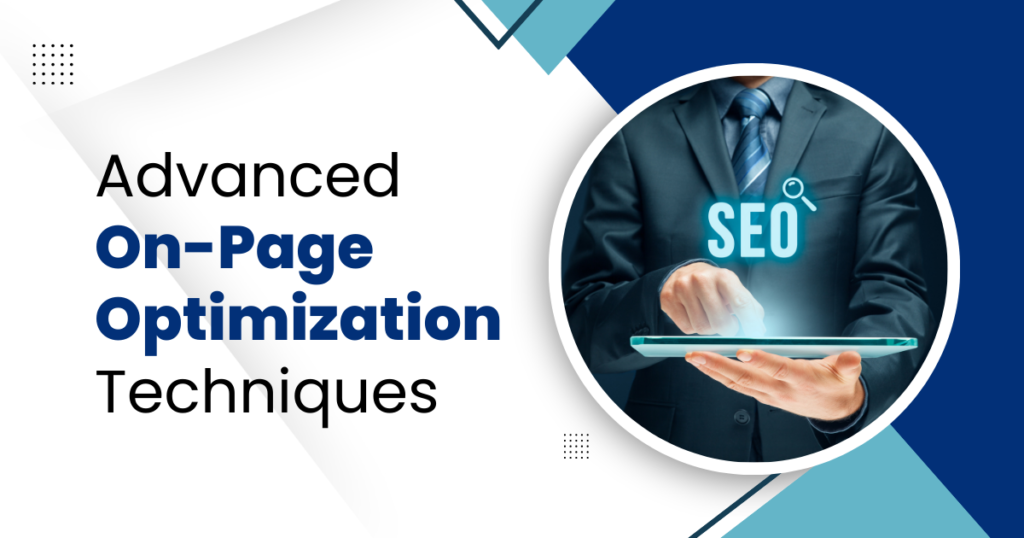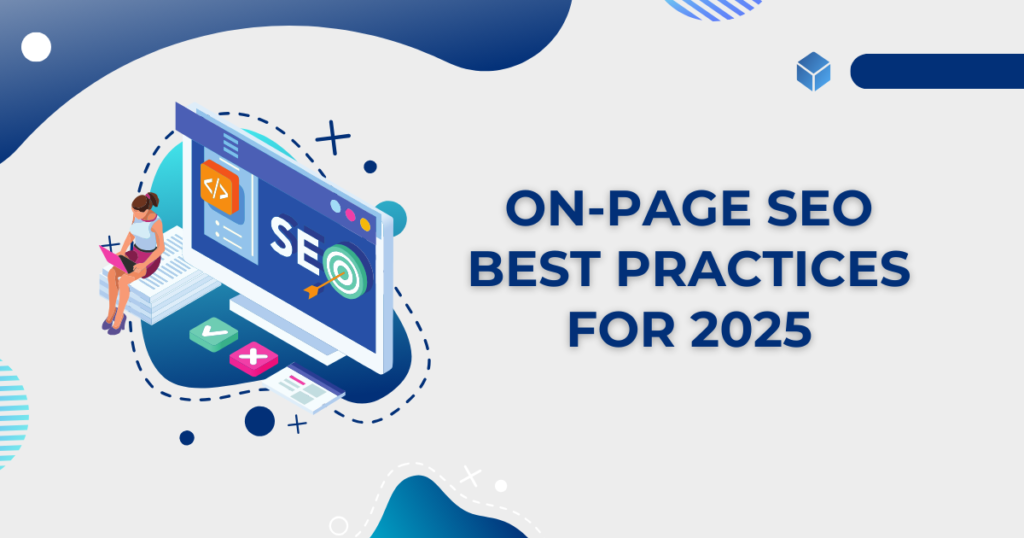Imagine you’ve spent countless hours building an incredible website, writing engaging content, and even optimizing it for search engines. Yet, despite all your efforts, your site remains hidden on the second or third page of Google search results. What’s the missing link? The answer lies in on-page SEO.
On-page is the key to unlocking your website’s full potential by optimizing individual web pages to help search engines understand your content and rank it higher. In this ultimate guide, we’ll break down the essential on-page SEO optimization, tips, and best practices that will elevate your site’s visibility and drive organic traffic.
What Is On-Page SEO?
Definition and Importance
On-page refers to the strategies and techniques used to optimize individual pages of your website to rank higher in search engine results pages (SERPs). It includes optimizing content, meta tags, headers, and technical elements like page load speed and mobile responsiveness.
The goal of on-page SEO is to make it easier for search engines to crawl and index your content, while simultaneously providing a better user experience.
By focusing on on-page optimization, you signal to Google that your content is relevant and high-quality, increasing the likelihood of ranking higher for target keywords.
How On-Page SEO Differs from Off-Page SEO
While on-page focuses on optimizing elements within your website, off-page SEO involves factors like backlinks, social signals, and brand mentions from other sites. Both on-page and off-page SEO are critical to building a strong SEO strategy, but on-page optimization is where you can have more control over your site’s content and technical elements.
Key Components of On-Page SEO
1. Keyword Research and Placement
Effective keyword research is the foundation of any successful SEO strategy. Start by identifying the keywords and phrases that are relevant to your content and audience. Use tools like Google Keyword Planner, Ahrefs, or SEMrush to discover high-volume, low-competition keywords. Once you’ve identified your target keywords, strategically place them in key areas such as:
- Title tags
- Meta descriptions
- Header tags(H1, H2, H3)
- Body Content
However, it’s essential to avoid keyword stuffing. Natural, meaningful integration of keywords ensures that both search engines and users can easily understand your content.
2. Meta Tags Optimization
Meta tags, including the title tag and meta description, play a crucial role in on-page optimization. Title tags should include your primary keyword and be limited to 60 characters for optimal display in search results.
The meta description, while not a direct ranking factor, helps improve click-through rates (CTR) by providing a compelling preview of your content. Keep your meta descriptions concise (under 160 characters) and incorporate target keywords to make your page stand out in search results.
3. Optimizing Header Tags (H1, H2, H3)
Header tags are an essential part of on-page optimization as they help structure your content and make it easier to read. The H1 tagis typically reserved for the page title and should include your primary keyword.
Subsequent header tags (H2, H3) should break your content into sections, providing a clear content hierarchy. Use these headers to improve both readability and relevance to search engines.
4. Internal Linking Strategies
Internal linking is an often overlooked but powerful on-page optimization tactic. Linking to other relevant pages on your website helps search engines crawl your site more efficiently while also keeping users engaged. When creating internal links, focus on:
- Linking to related content: Make it easier for users to find relevant information on your site.
- Using descriptive anchor text: Include keywords that accurately describe the linked content.
- Avoiding over-linking: Only link when it adds value to the user experience.
Internal links not only improve site navigation but also distribute page authority across your website, boosting overall rankings.
5. Image Optimization
Images enhance user experience and engagement, but they also need optimization for SEO. When adding images to your content, make sure to:
- Use descriptive file names: Instead of “IMG_1234.jpg,” use something like “on-page-SEO-guide.jpg.”
- Add alt tags: Alt text describes the image to search engines and users with disabilities. Incorporate relevant keywords in alt text where appropriate.
- Compress image files: Large image files can slow down your site, which affects both user experience and rankings.
Optimizing your images ensures that they contribute to the overall SEO efforts without slowing down your website.
Advanced On-Page Optimization Techniques

1. Content Optimization Tips
Content is king when it comes to SEO, and optimized content can make all the difference. Here are some tips for making your content SEO-friendly:
- Length matters: Long-form content (1,000+ words) tends to perform better in rankings, provided it’s high-quality and comprehensive.
- Answer user questions: Tailor your content to satisfy search intent. If users are looking for answers, provide clear, concise solutions.
- Use bullet points and lists: These help make your content more scannable and user-friendly.
- Update old content: Regularly update existing posts to ensure they remain relevant and fresh.
2. Page Load Speed Optimization
Page load speed is a critical factor for both SEO and user experience. Slow-loading pages can result in higher bounce rates and lower rankings. To optimize your site’s speed, consider the following:
- Compress images and videosto reduce file sizes.
- Minimize JavaScript and CSS filesto speed up rendering.
- Leverage browser cachingto improve load times for returning visitors.
Use tools like Google PageSpeed Insightsto measure your site’s speed and identify areas for improvement.
3. Mobile Responsiveness
With the majority of internet traffic coming from mobile devices, it’s crucial to ensure that your website is mobile-friendly. Google uses mobile-first indexing, meaning it primarily uses the mobile version of your site to rank pages. To improve mobile responsiveness:
- Use a responsive designthat adapts to various screen sizes.
- Optimize page elementslike fonts, buttons, and navigation for smaller screens.
- Test your site’s mobile usabilityregularly using Google’s Mobile-Friendly Test tool.
Explore more: Advanced SEO Techniques to Outrank Competitors in 2024
On-Page SEO Best Practices for 2025

1. E-A-T (Expertise, Authority, Trustworthiness)
Google places a high emphasis on content quality and trustworthiness, especially for YMYL (Your Money, Your Life) topics. To improve your E-A-T, ensure that:
- Your content is written by experts or professionals in the field.
- You provide citations and references to credible sources.
- Your website has a secure connection (HTTPS) and an easily accessible privacy policy.
2. User Intent and Behavior Signals
Understanding user intent is essential for optimizing your content. User intent refers to the reason behind a search query—whether users are looking for information, making a purchase, or seeking a solution.
Align your content with the user’s needs and monitor engagement metrics like bounce rate, dwell time, and pages per session. A positive user experience signals to Google that your site is valuable.
3. Structured Data and Rich Snippets
Structured data helps search engines understand the context of your content, which can lead to enhanced visibility in the form of rich snippets. Use schema markupto display additional information like star ratings, reviews, and FAQs directly in search results. This can increase your CTR and improve rankings.
Step-by-Step Checklist for On-Page SEO Success
To ensure your website is fully optimized, follow this checklist:
- Conduct thorough keyword researchand strategically place keywords throughout your content.
- Optimize meta tags(title and description) with relevant keywords.
- Structure your content using header tags(H1, H2, H3).
- Create a strong internal linking structureto improve site navigation and SEO.
- Optimize imagesby reducing file sizes and using descriptive alt tags.
- Improve page load speedand mobile responsiveness.
- Regularly update and optimize contentto maintain relevance.
Conclusion
On-page SEO is a critical part of any successful SEO strategy. By optimizing key elements like keywords, meta tags, headers, and internal links, you can significantly improve your site’s rankings and visibility on Google.
Remember, SEO is an ongoing process, so continue to refine and update your strategy to stay ahead of the competition. By implementing these on-page SEO best practices, you’ll be well on your way to boosting organic traffic and achieving long-term success in search results.
